8. Enumeration using various tools
As an ethical hacker, you should use a range of tools to find as much information as possible about the target network’s systems.
1. Enumerate using Global Network Inventory
Global Network Inventory is used as an audit scanner in zero deployment and agent-free environments. It scans single or multiple computers by IP range or domain, as defined by the Global Network Inventory host file.
After installation, open the tool. The Global Network Inventory GUI appears. Click Close on the Tip of the Day pop-up.
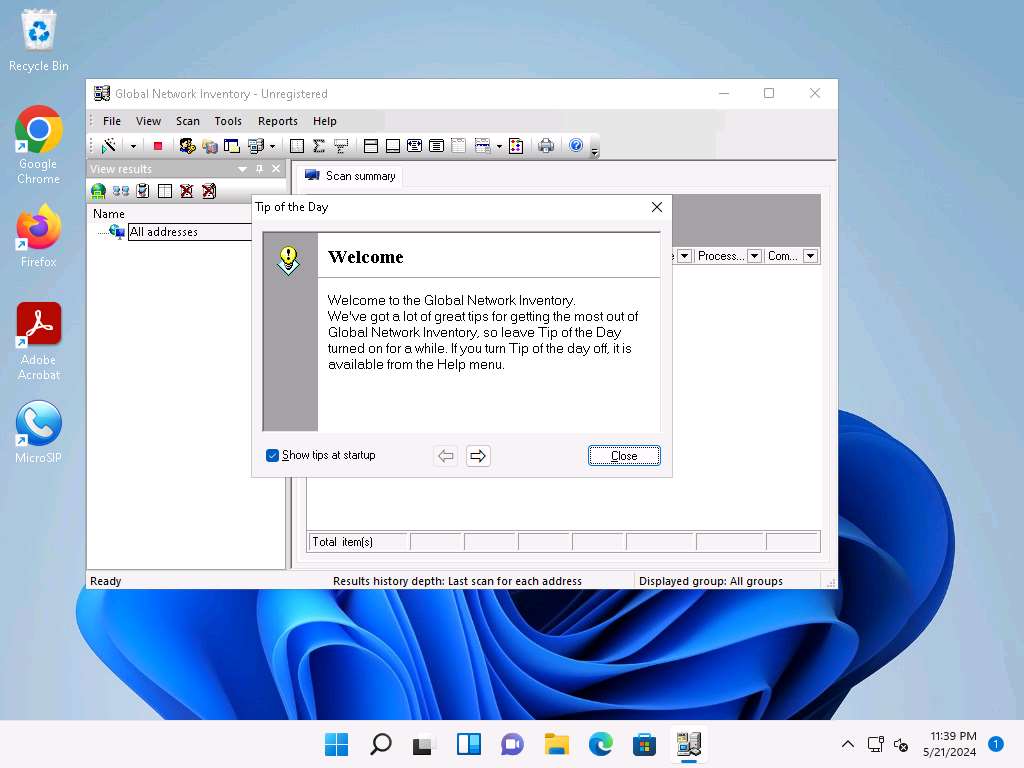
The New Audit Wizard window appears; click Next.
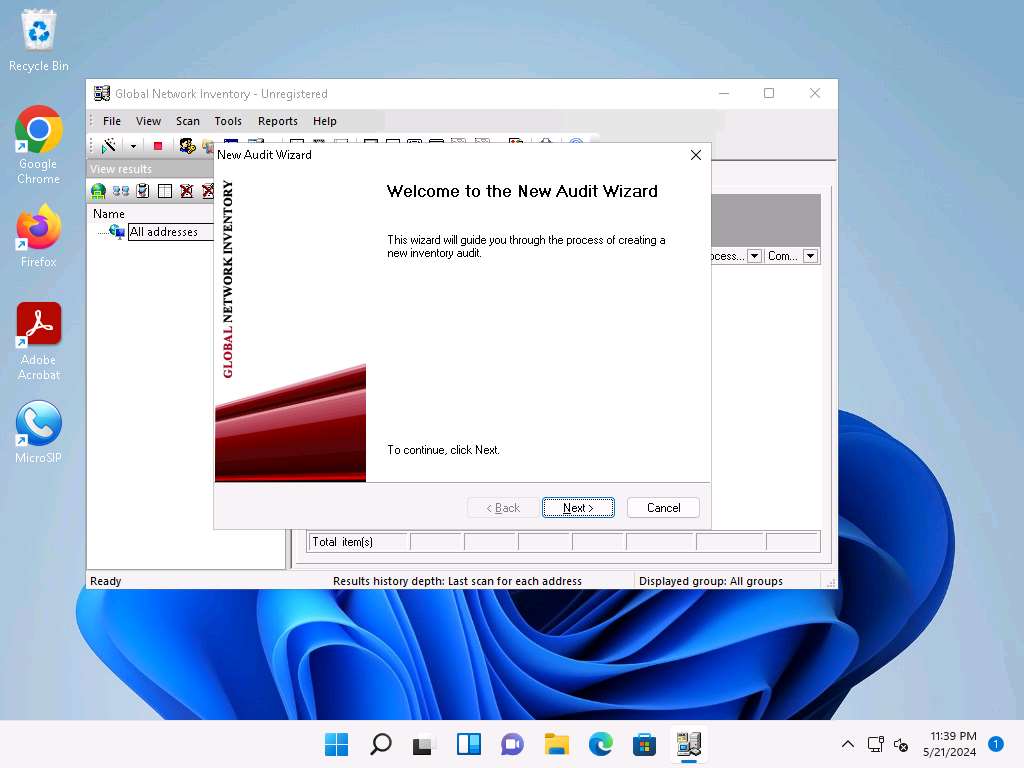
Under the Audit Scan Mode section, click the Single address scan radio button, and then click Next.
You can also scan an IP range by clicking on the IP range scan radio button, after which you will specify the target IP range.
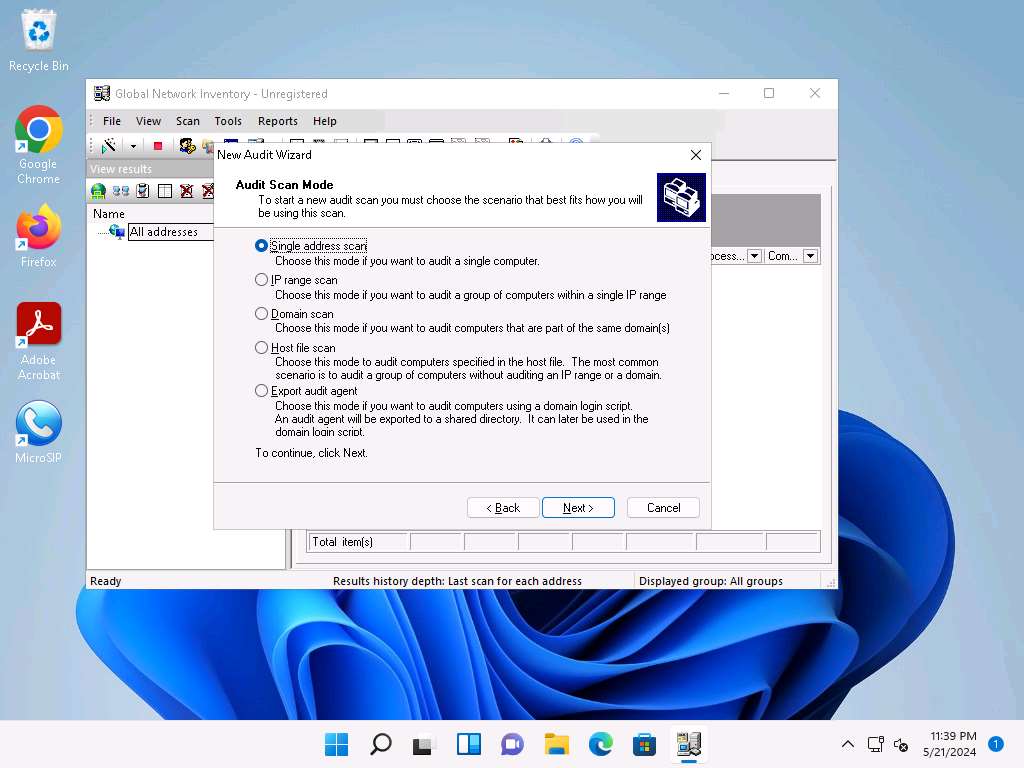
Under the Single Address Scan section, specify the target IP address in the Name field of the Single address option (in this example, the target IP address is 10.10.1.22); Click Next.
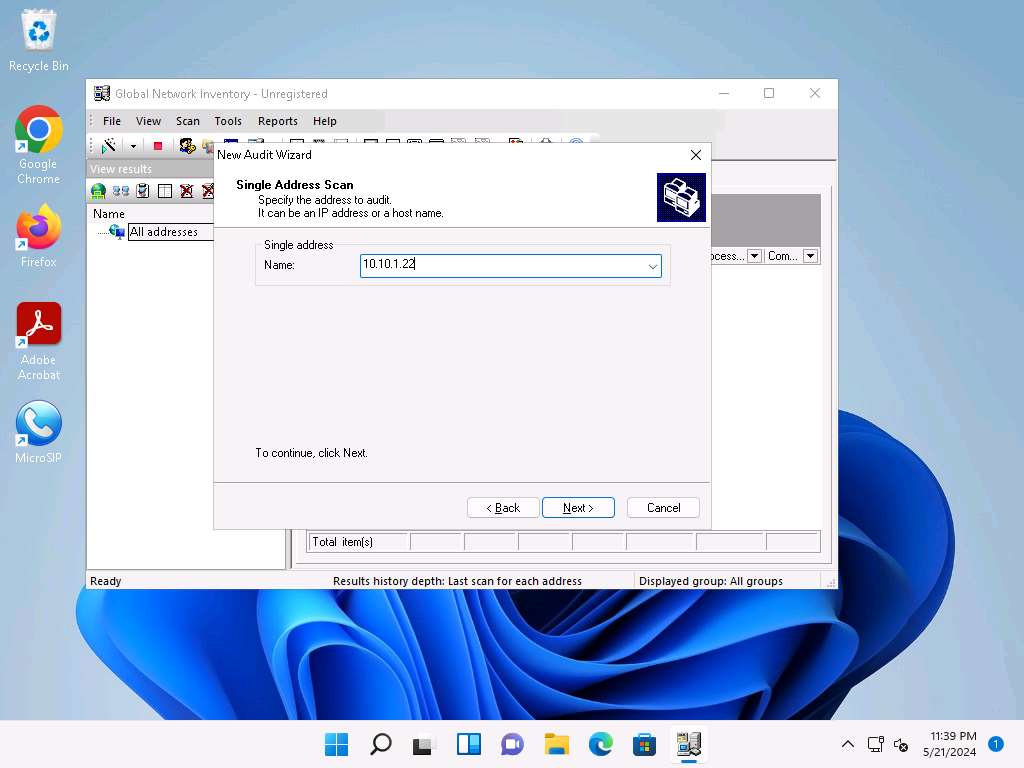
The next section is Authentication Settings; select the Connect as radio button and enter the Windows Server 2022 machine credentials (Domain\Username: Administrator and Password: Pa$$w0rd), and then click Next.
In reality, attackers do not know the credentials of the remote machine(s). In this situation, they choose the Connect as currently logged on user option and perform a scan to determine which machines are active in the network. With this option, they will not be able to extract all the information about the target system. Because this lab is just for assessment purposes, we have entered the credentials of the remote machine directly.
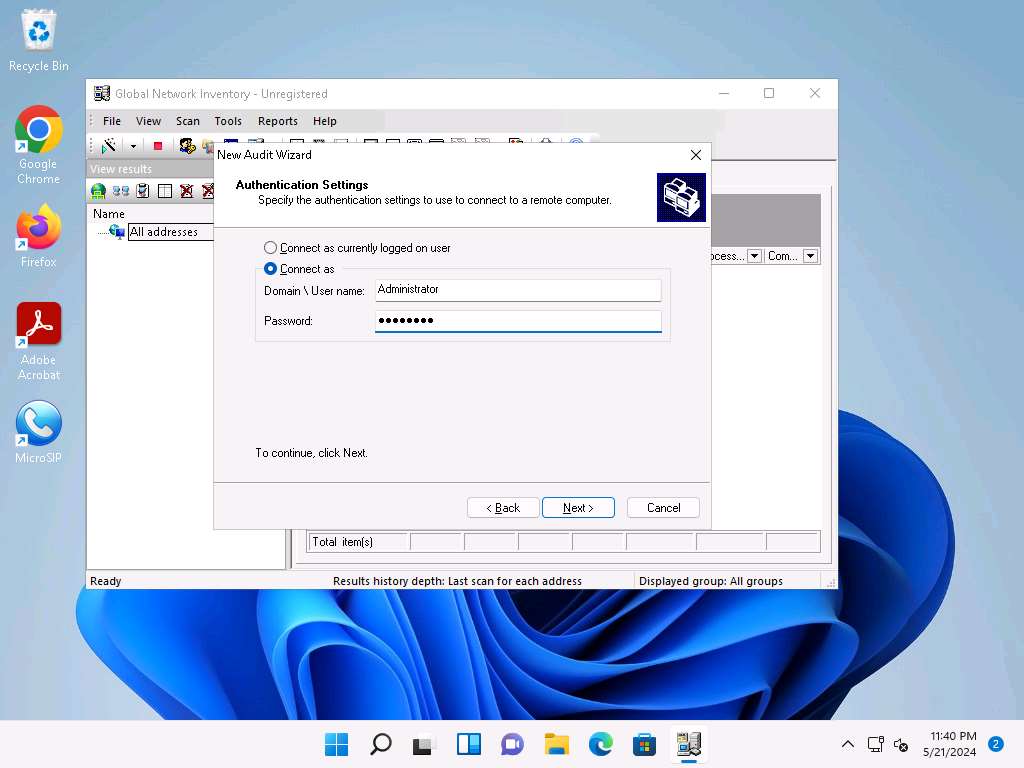
In the final step of the wizard, leave the default settings unchanged and click Finish.
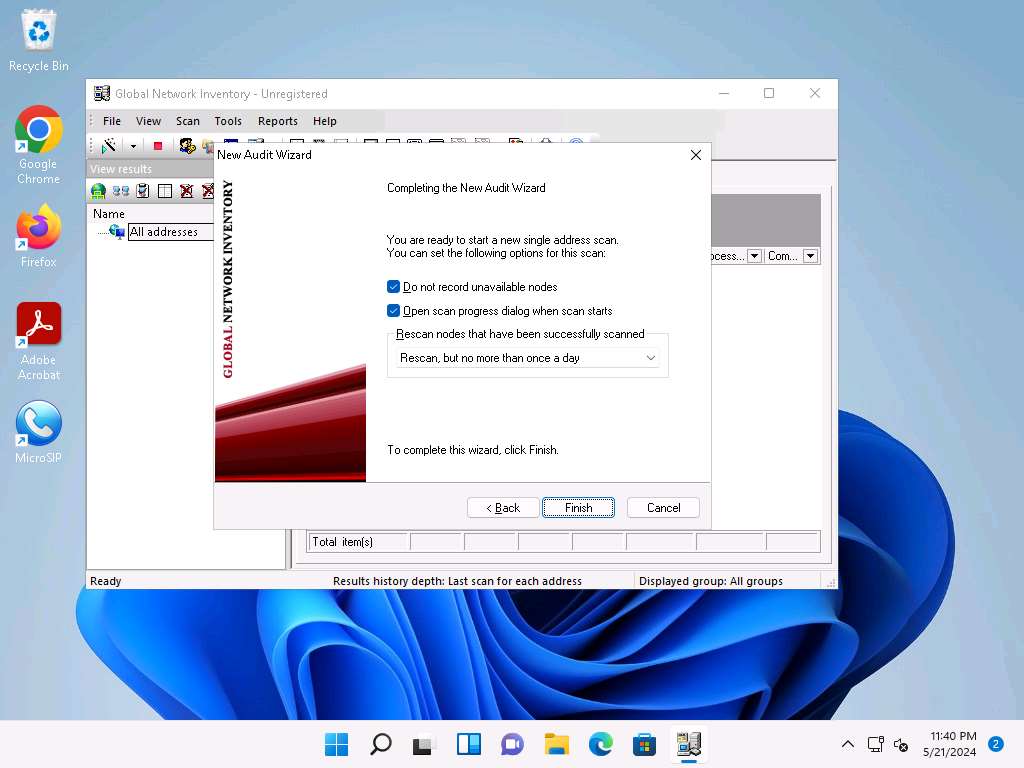
The Scan progress window will appear.
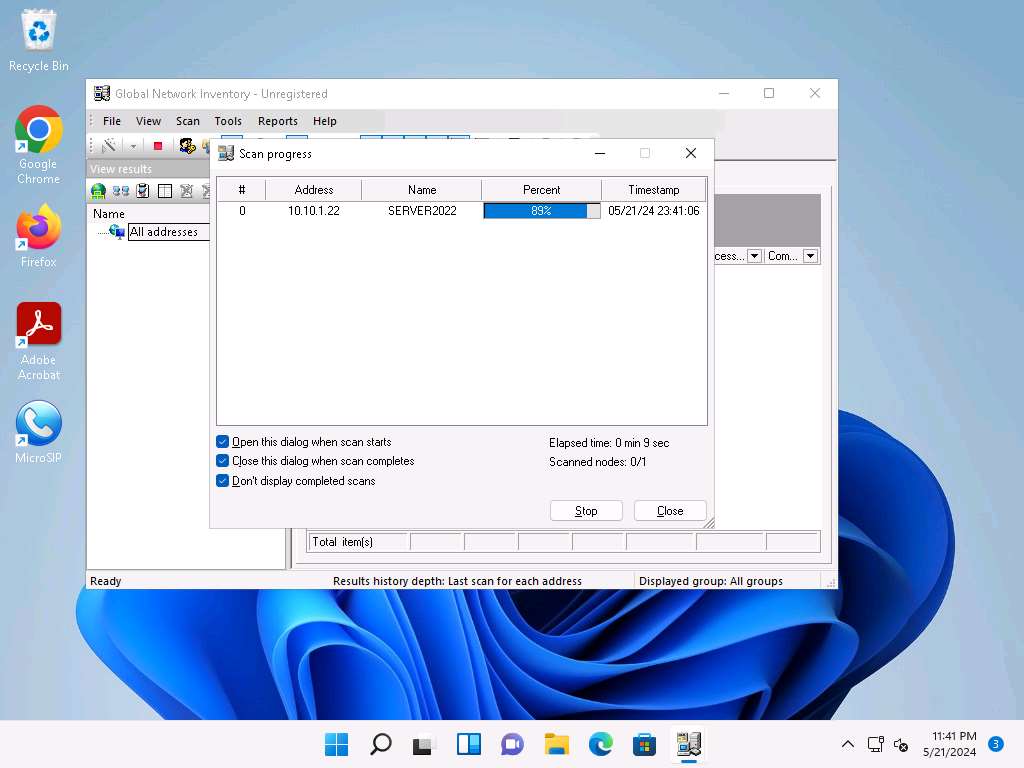
The results are displayed when the scan finished. The Scan summary of the scanned target IP address (10.10.1.22) appears.
The scan result might vary when you perform this task.

Hover your mouse cursor over the Computer details under the Scan summary tab to view the scan summary, as shown in the screenshot.

Click the Operating System tab and hover the mouse cursor over Windows details to view the complete details of the machine.
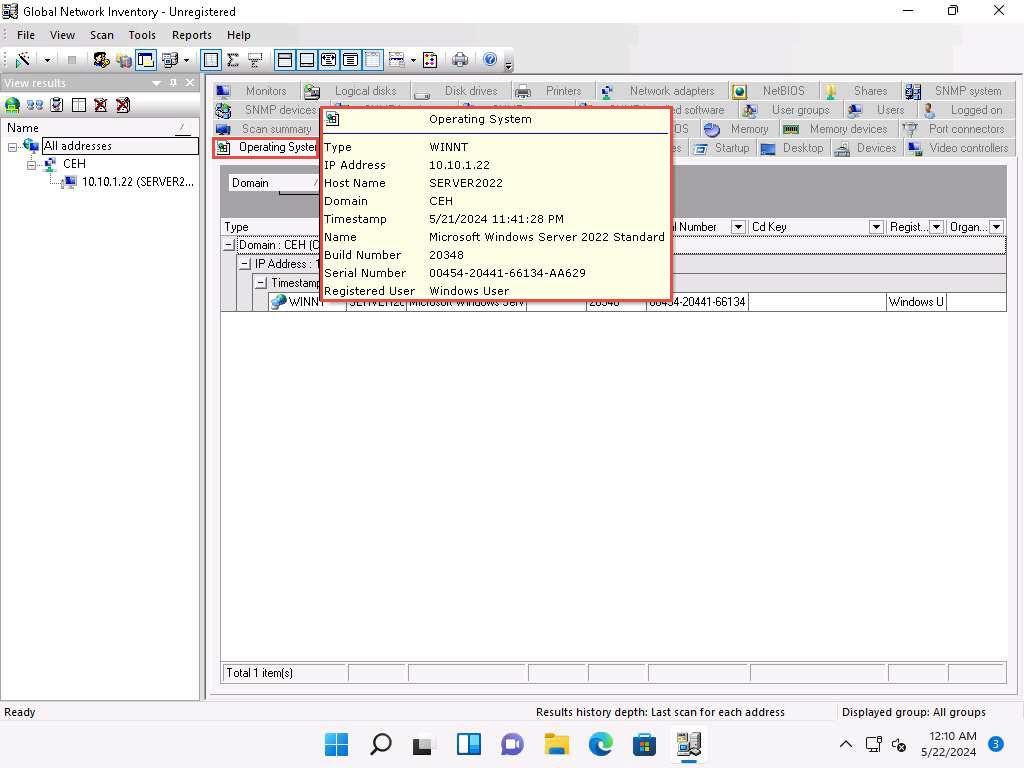
Click the BIOS tab, and hover the mouse cursor over windows details to display detailed BIOS settings information.
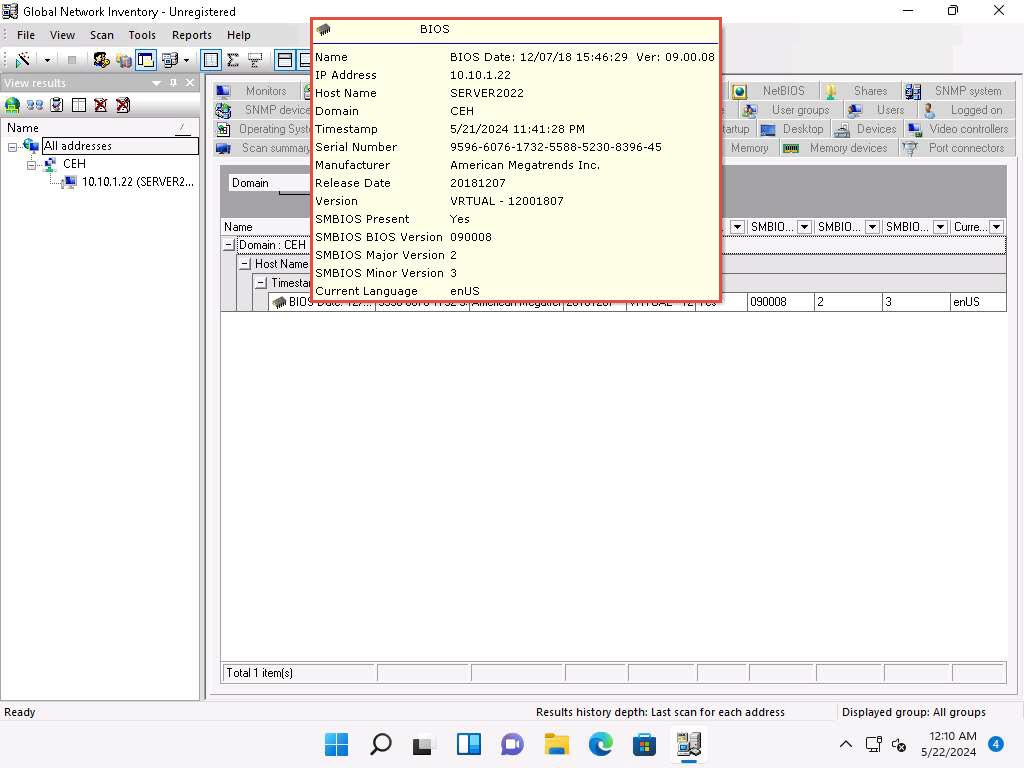
Click the NetBIOS tab, and hover the mouse cursor over any NetBIOS application to display the detailed NetBIOS information about the target.
Hover the mouse cursor over each NetBIOS application to view its details.
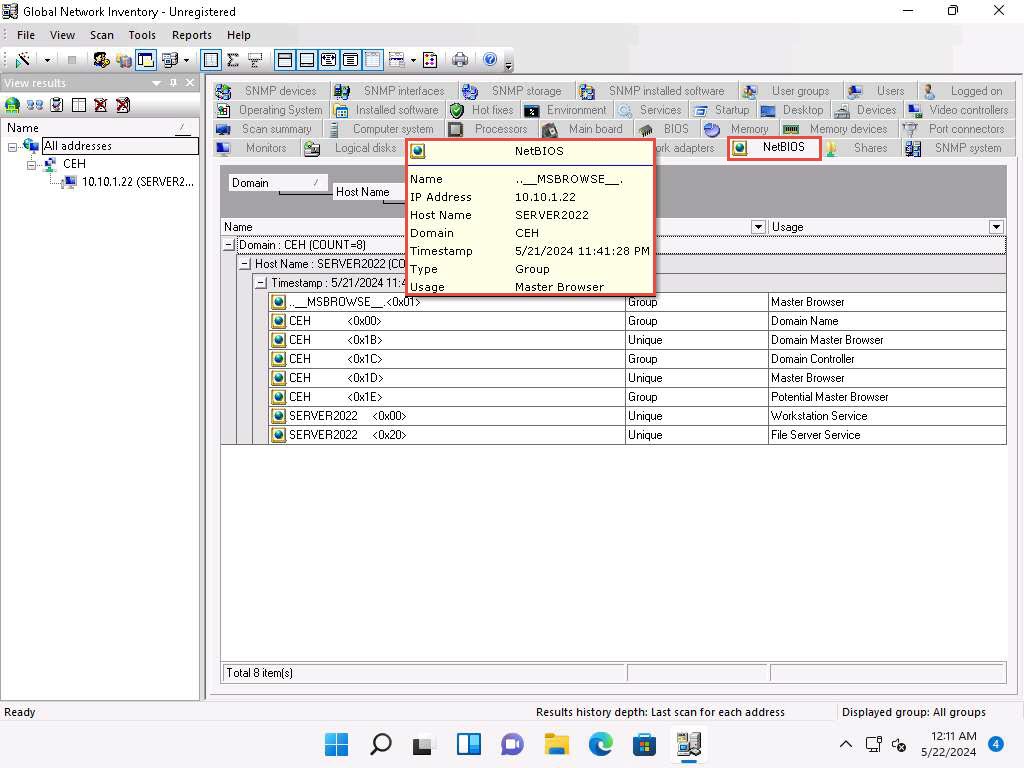
Click the User groups tab and hover the mouse cursor over any username to display detailed user groups information.
Hover the mouse cursor over each username to view its details.
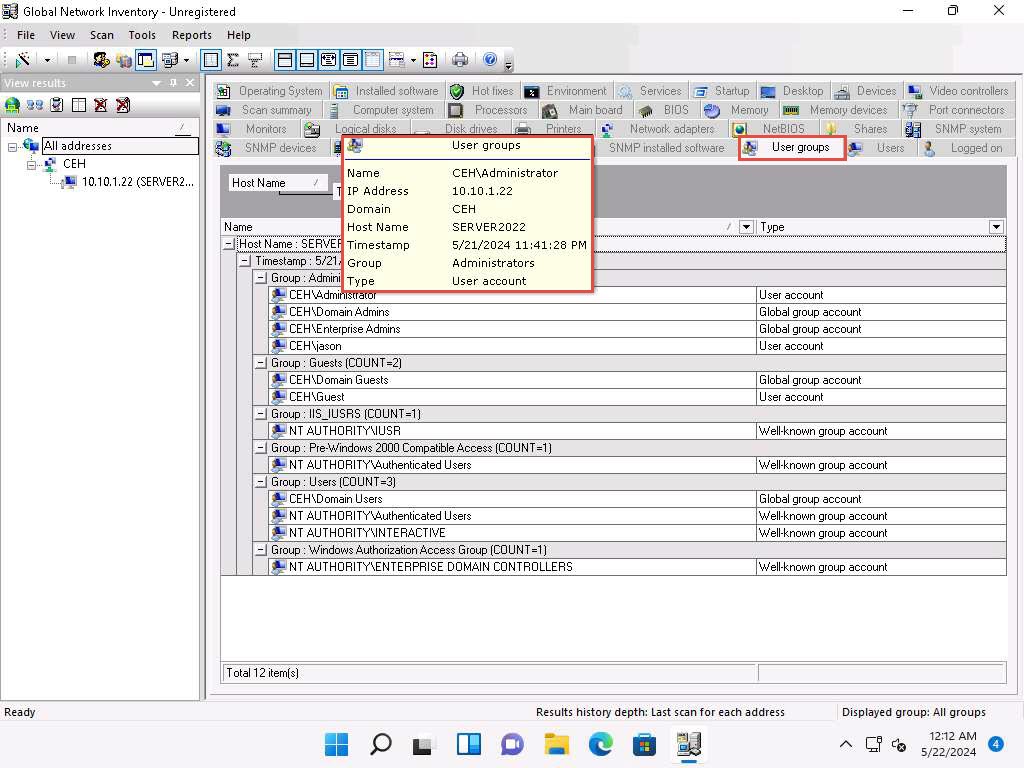
Click the Users tab, and hover the mouse cursor over the username to view login details for the target machine.
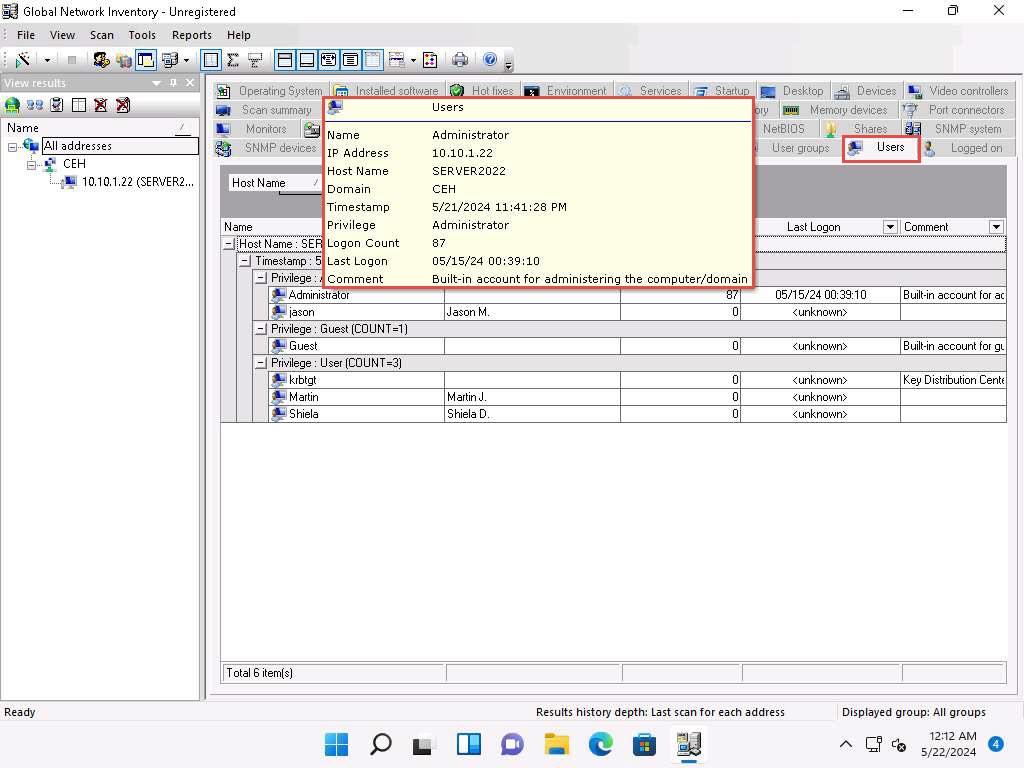
Click the Services tab and hover the mouse cursor over any service to view its details.
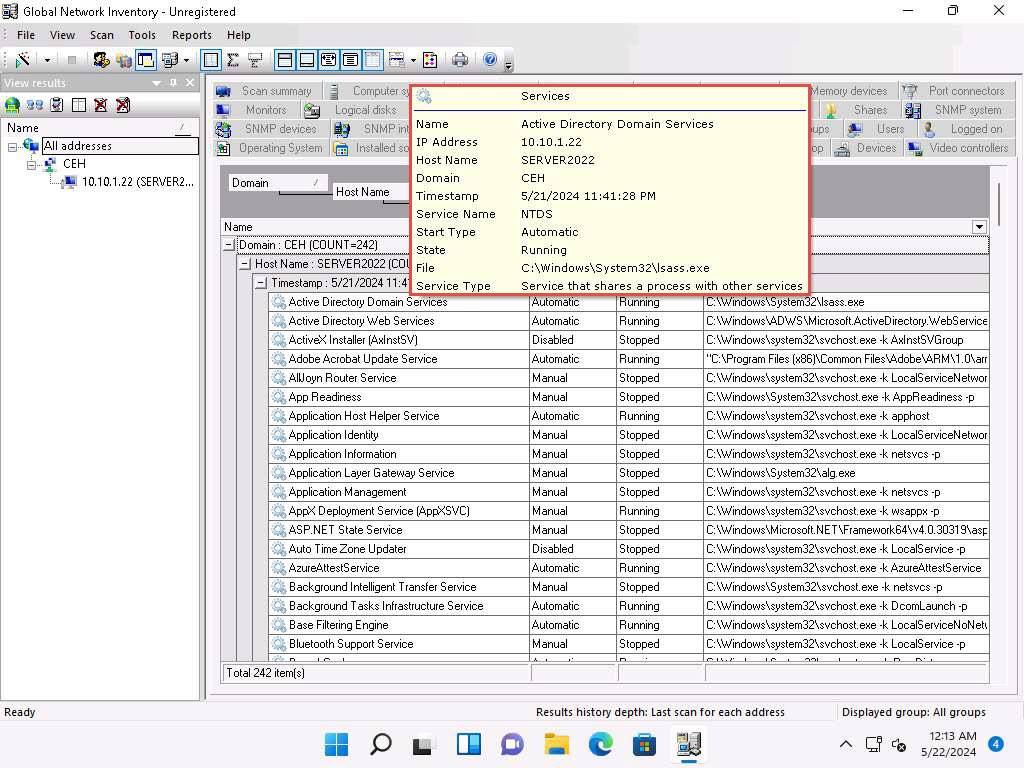
Click the Installed software tab, and hover the mouse cursor over any software to view its details.
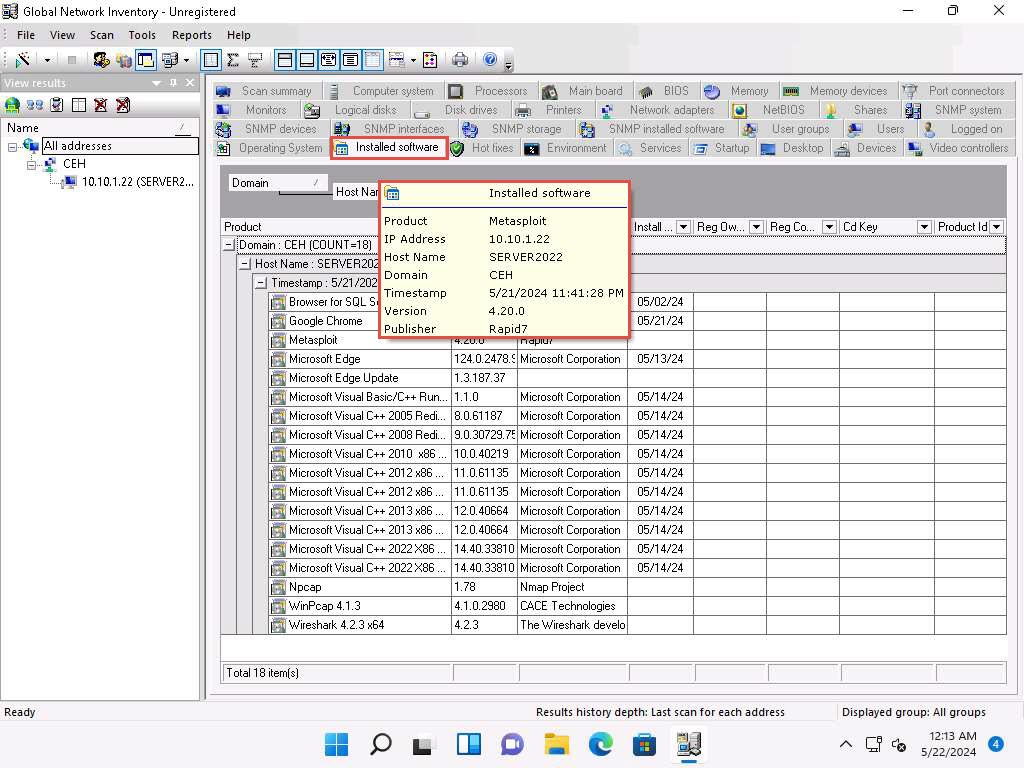
Click the Shares tab, and hover the mouse cursor over any shared folder to view its details.
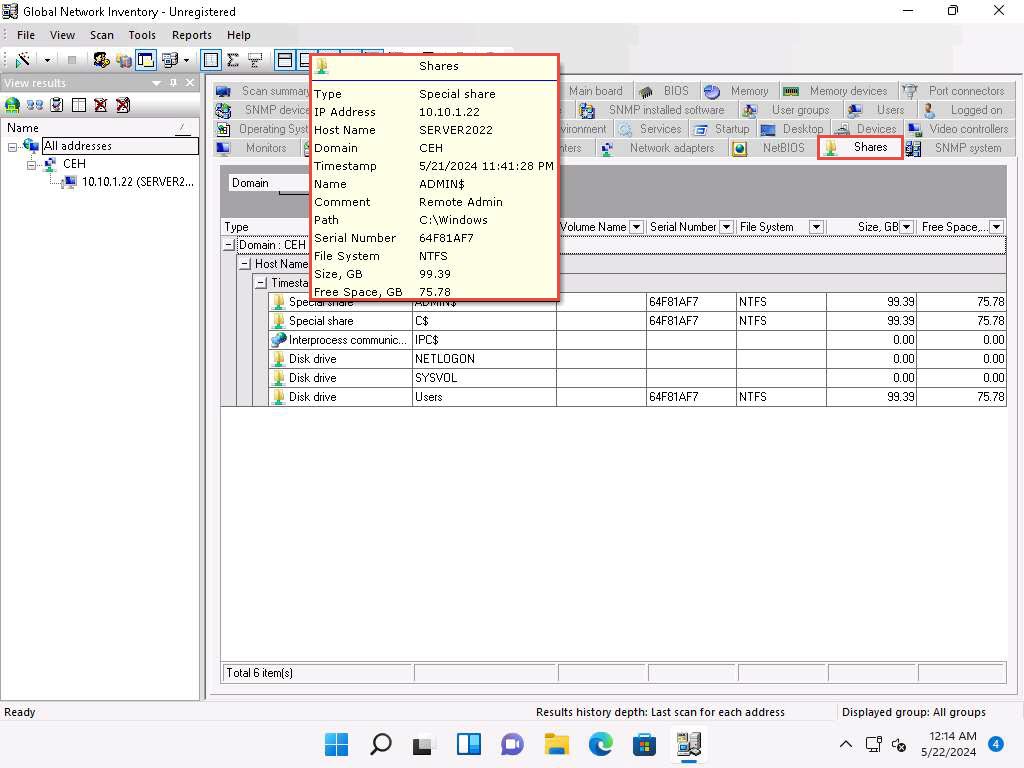
Similarly, you can click other tabs such as Computer System, Processors, Main board, Memory, SNMP systems and Hot fixes. Hover the mouse cursor over elements under each tab to view their detailed information.
2. Enumerate using angry IP scanner
3. Enumerate using Enum4Linux from samba and Windows hosts
enumerate netbios name

Enumerate everything
Last updated
Was this helpful?
